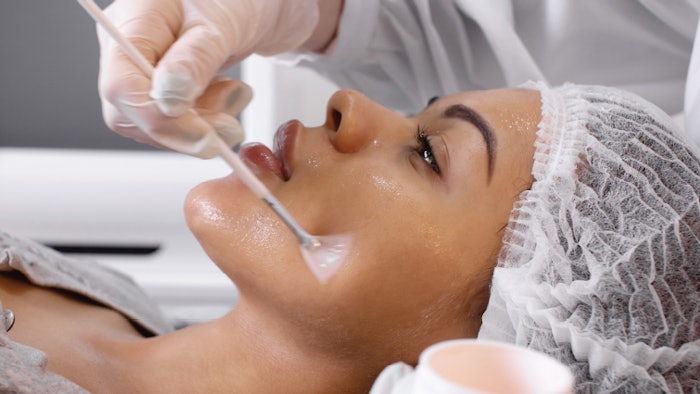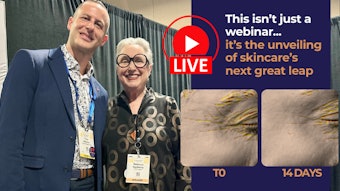
When speaking to first time clients about chemical peels, their minds can sometimes go to that infamous “Sex and the City” episode where Samantha receives a chemical peel that leaves her face red, inflamed and peeling. Ashamed by the dreaded downtime, she’s forced to cover her face with sunglasses, a hat and a scarf. Safe to say, it was not a good look for her, nor did it reassure the viewers watching the show at home that chemicals help promote healthy skin. To this day, I’m still having to explain to clients that not all chemical peels will produce this result, nor is it the result that you want to gain from this kind of professional treatment. Education really is the key here when it comes to understanding chemical peels, and it’s something that as skin care professionals, we must ensure we do every single time a guest visits us in the treatment room and is considering a peel.
Fortunately, chemical peels have come a long way since, and we now can offer our clients options that are suitable for every skin type and condition, even for sensitive skin. Which brings us to this exciting topic of polyhydroxy acids (PHAs), which I like to refer to as the next generation in chemical peels. Before we can dive into this new frontier, let’s first take a step back to properly define hydroxy acids and the different types.
Related: PHA Breakdown: A Guide to Polyhydroxy Acids in Skin Care
Hydroxy Acids 101
Hydroxy acids, which contain one or more hydroxyl groups in a molecule, in addition to that present in the acid group itself, are known to have incredible benefits when used in skin care. Examples of hydroxy acids include alpha hydroxy acids (AHAs) and beta hydroxy acids (BHAs), which are used in skin care to exfoliate and help clear pores.
AHAs are a group of plant and animal-derived acids used in a variety of skin care products. These include daily anti-aging products such as serums, toners and creams, as well as concentrated treatments via chemical peels.
Examples of AHAs include citric acid (found in citrus fruits), glycolic acid (found in sugar cane), lactic acid (found in sour milk), malic acid (found in apples) and tartaric acid (found in grapes). Each AHA provides slightly varying benefits in the skin depending on their chemical structure and molecular size, as well as to help soften and loosen the desmosome bonds (the intercellular calcium bonds) that hold our dead skin cells together within the stratum corneum. In doing so, they assist the skin’s natural cell turnover, helping to remove the dead cells, allowing new skin cells to become visible.
While AHAs are water-soluble acids derived from plants, BHAs are oil-soluble acids. In skin care products, BHAs penetrate the skin and unclog pores, which can help those with oily skin prone to breakouts. The most common BHA in skin care is salicylic acid, a popular ingredient known for its exfoliating properties, making it very useful for acne-prone skin. Like all BHAs, it helps loosen dead skin cells to enable more efficient exfoliation.
Both AHAs and BHAs are important in treating a variety of skin concerns such as build-up of dead skin, the signs of skin aging, surface discoloration and overall skin tone and texture concerns.
Continue reading about peeling with PHAs in our March Digital Magazine...
PHA vs. AHA
The Sounds Like Spa Podcast battled out ingredients including PHA and AHA. Check out the differences between these two magic ingredients. Don't forget to listen to the episode on Spotify and Amazon Music to listen to all of the ingredient battles the Skin Inc. team discussed.
Tracey Beeby is an acknowledged expert within the skin care industry. Having worked in the industry for more than 35 years, Beeby’s professional experience extends from owning and running her own salons, to training doctors, business owners and skin technicians for the past 17 years. As Global Technical Training Manager for Ultraceuticals her focus is on raising the brands profile globally, and her work in advanced facial treatment development and clinical trials means that she knows how to achieve the very best results.











